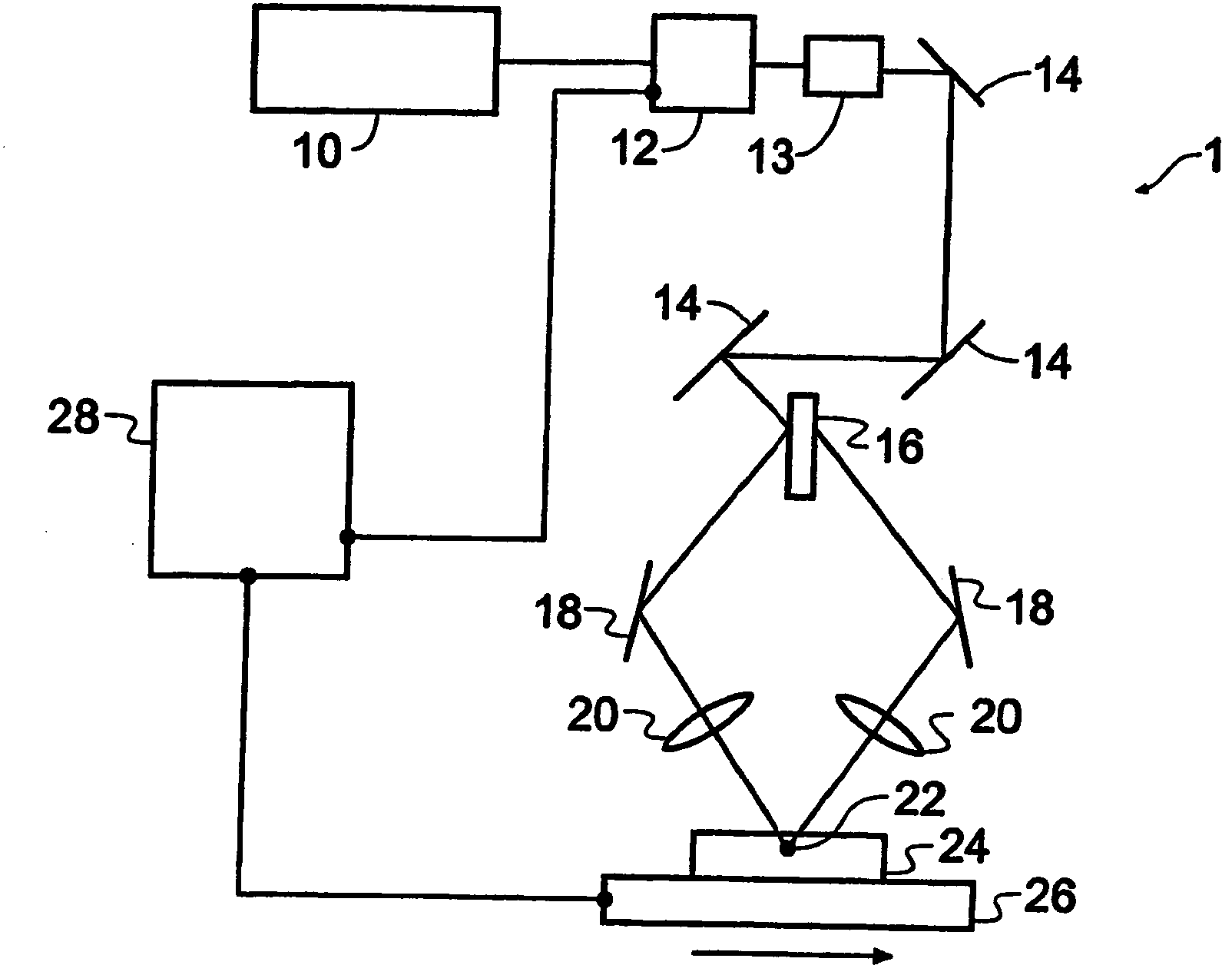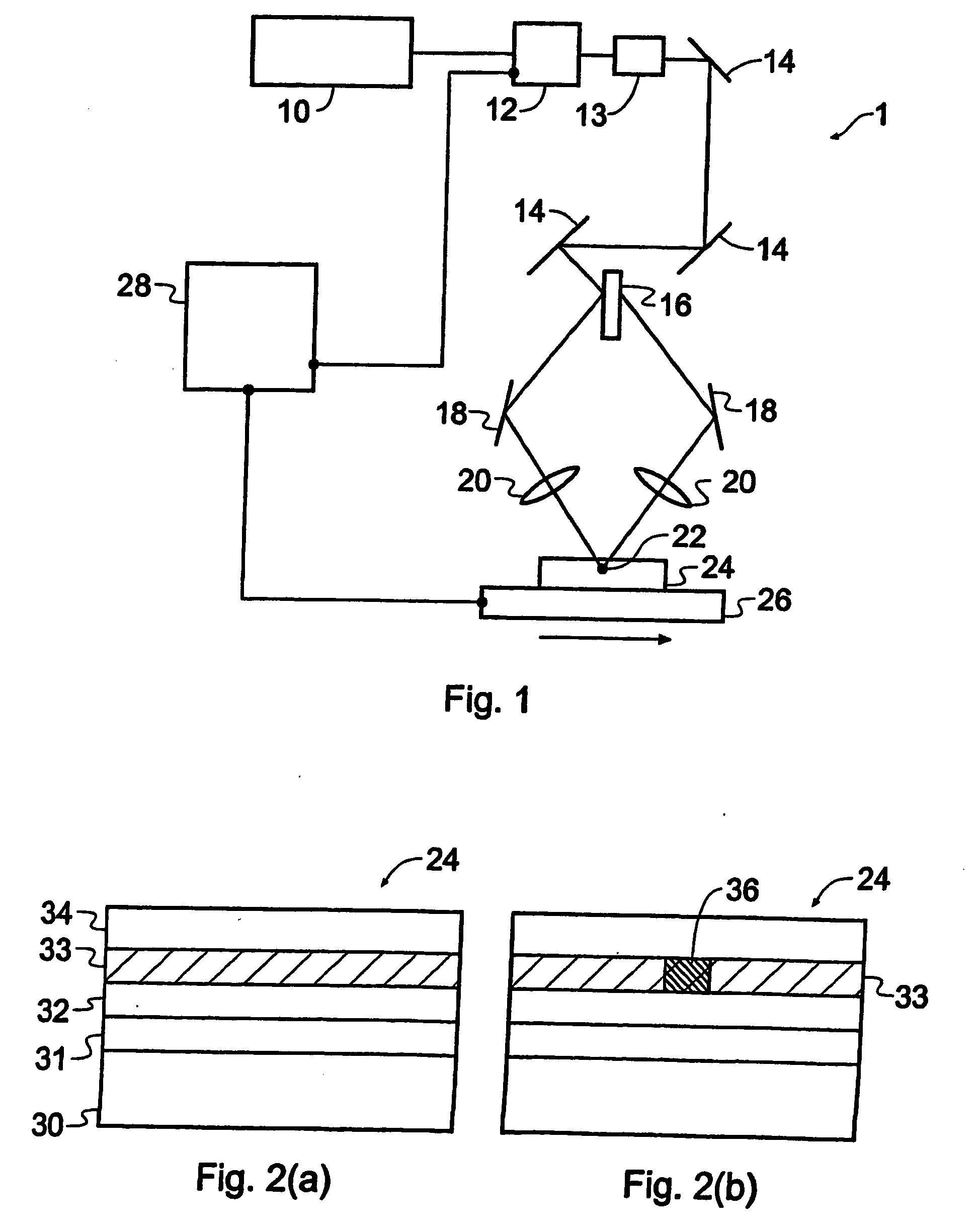Fabrication of waveguides and bragg gratings with uv-irradiation
a technology of bragg grating and waveguide, which is applied in the direction of glass making apparatus, instruments, optics, etc., can solve the problems of poor grating quality, difficult and costly devices to produce, and inability to realise and optimise both the waveguide core and the bragg grating superstructure of the channel, so as to enhance the photosensitivity, the complexity of the device that can be fabricated is further increased, and the sample is highly accurate repositioning
- Summary
- Abstract
- Description
- Claims
- Application Information
AI Technical Summary
Benefits of technology
Problems solved by technology
Method used
Image
Examples
first embodiment
[0057]FIG. 1 shows a schematic depiction of apparatus 1 suitable for carrying out methods according to embodiments of the present invention. The apparatus comprises a laser system 10 operable to generate ultraviolet light, for example a continuous wave argon-ion laser with a frequency-doubled output at 244 nm. The output beam of the laser system 10 passes through an acousto-optic modulator 12, operable to modulate or strobe the beam so as to form pulses of light. A spatial filter 13 is positioned after the modulator to improve beam quality. The beam is then steered using a series of mirrors 14 to a beam splitter 16, which splits the beam into two equal parts, each following its own path. Further, independently movable, mirrors 18 redirect the two parts of the beam through focussing lenses 20 so that the parts overlap at an intersection, and interfere to form an interference pattern comprising a spot of light 22 having a periodic series of bright and dark intensity fringes. The perio...
PUM
| Property | Measurement | Unit |
|---|---|---|
| Angle | aaaaa | aaaaa |
| Photosensitivity | aaaaa | aaaaa |
| Refractive index | aaaaa | aaaaa |
Abstract
Description
Claims
Application Information
 Login to View More
Login to View More - R&D
- Intellectual Property
- Life Sciences
- Materials
- Tech Scout
- Unparalleled Data Quality
- Higher Quality Content
- 60% Fewer Hallucinations
Browse by: Latest US Patents, China's latest patents, Technical Efficacy Thesaurus, Application Domain, Technology Topic, Popular Technical Reports.
© 2025 PatSnap. All rights reserved.Legal|Privacy policy|Modern Slavery Act Transparency Statement|Sitemap|About US| Contact US: help@patsnap.com



